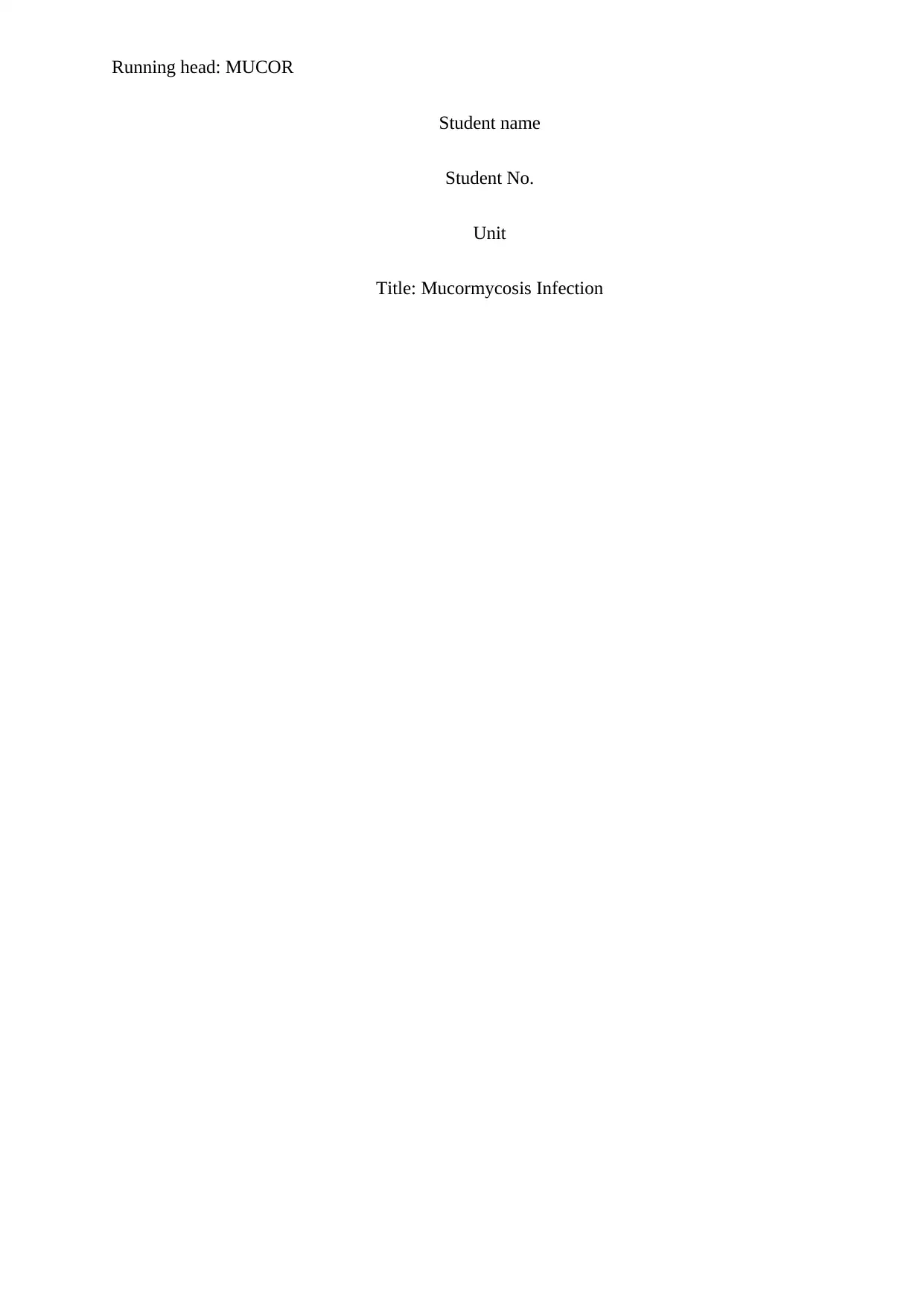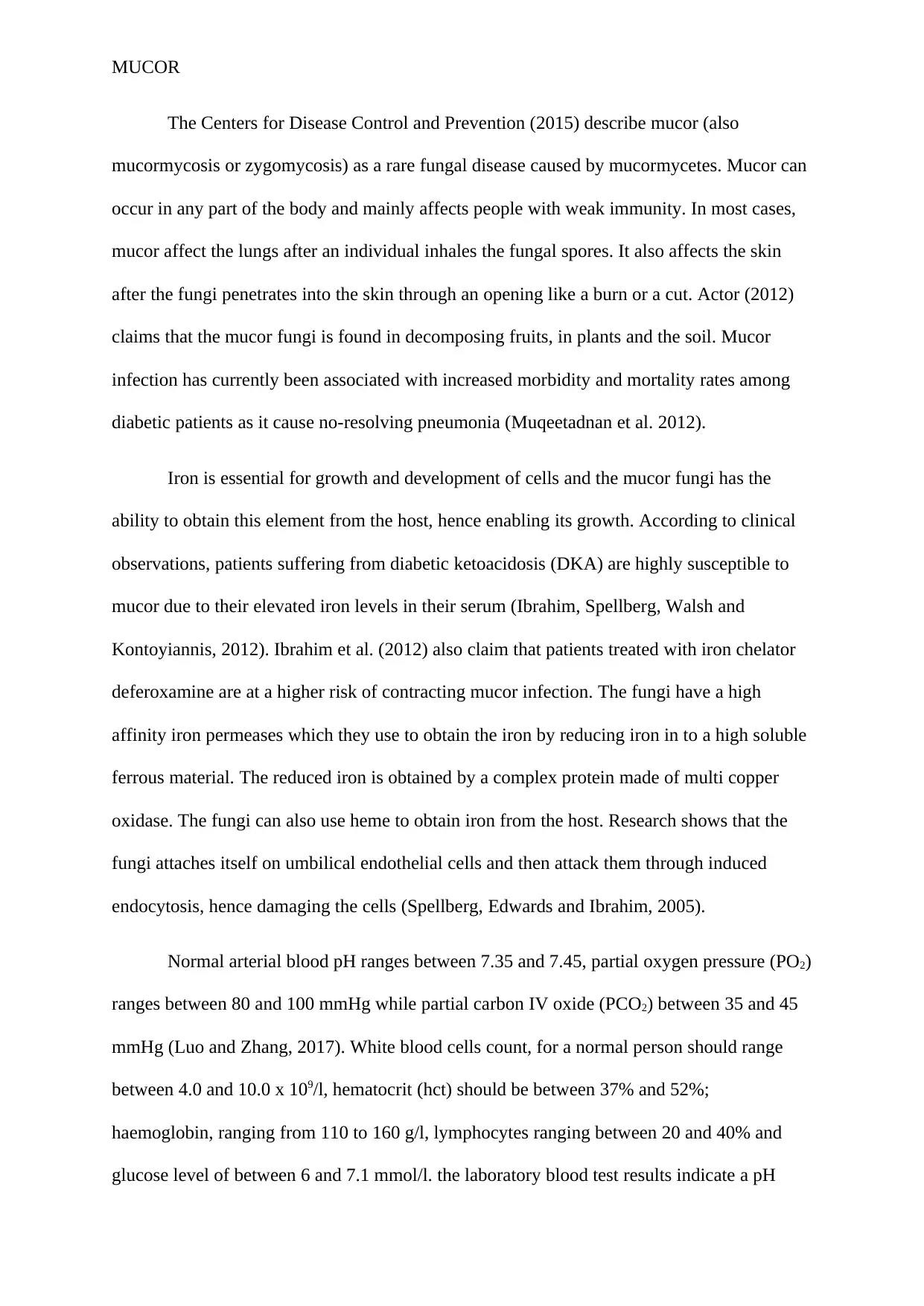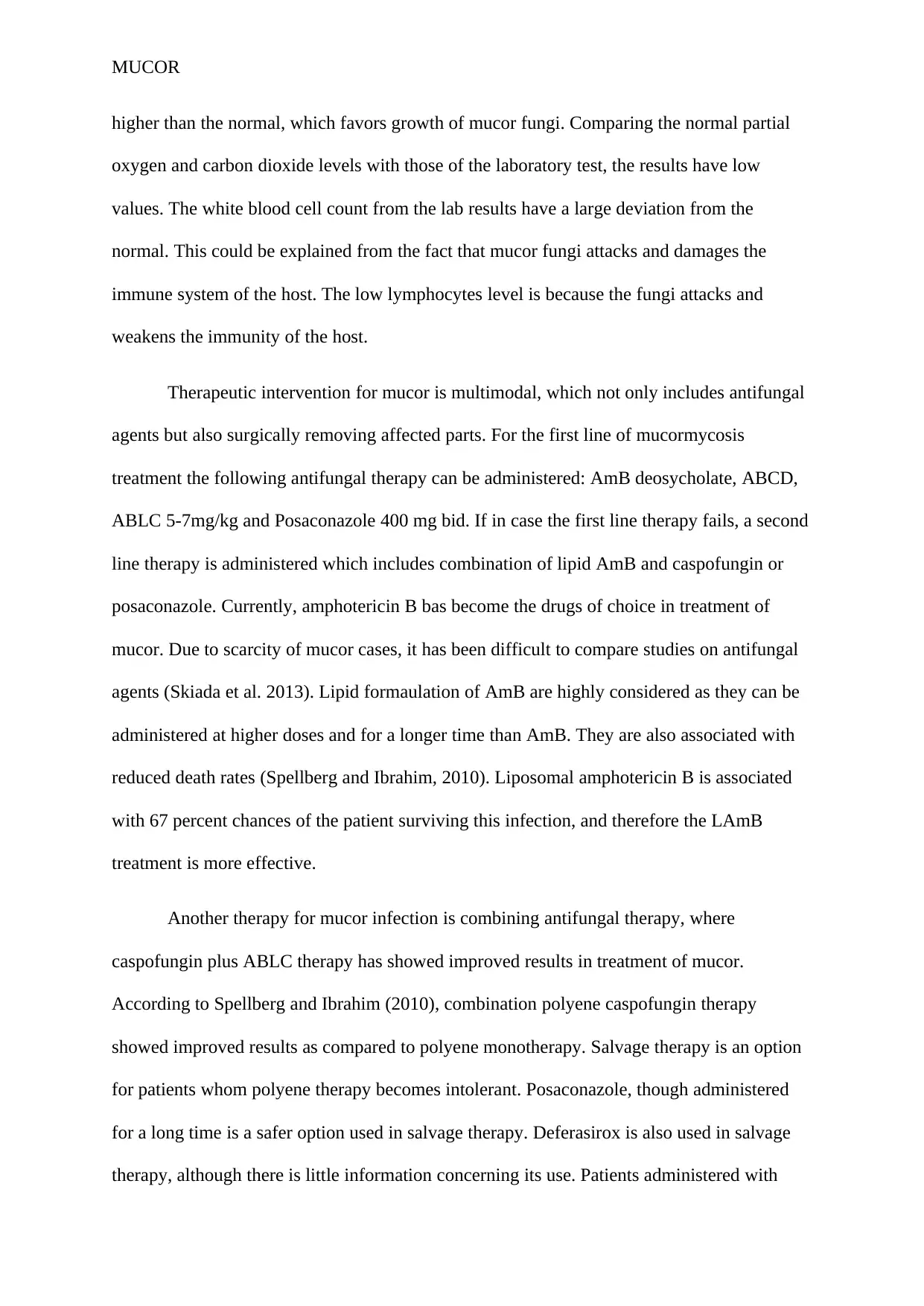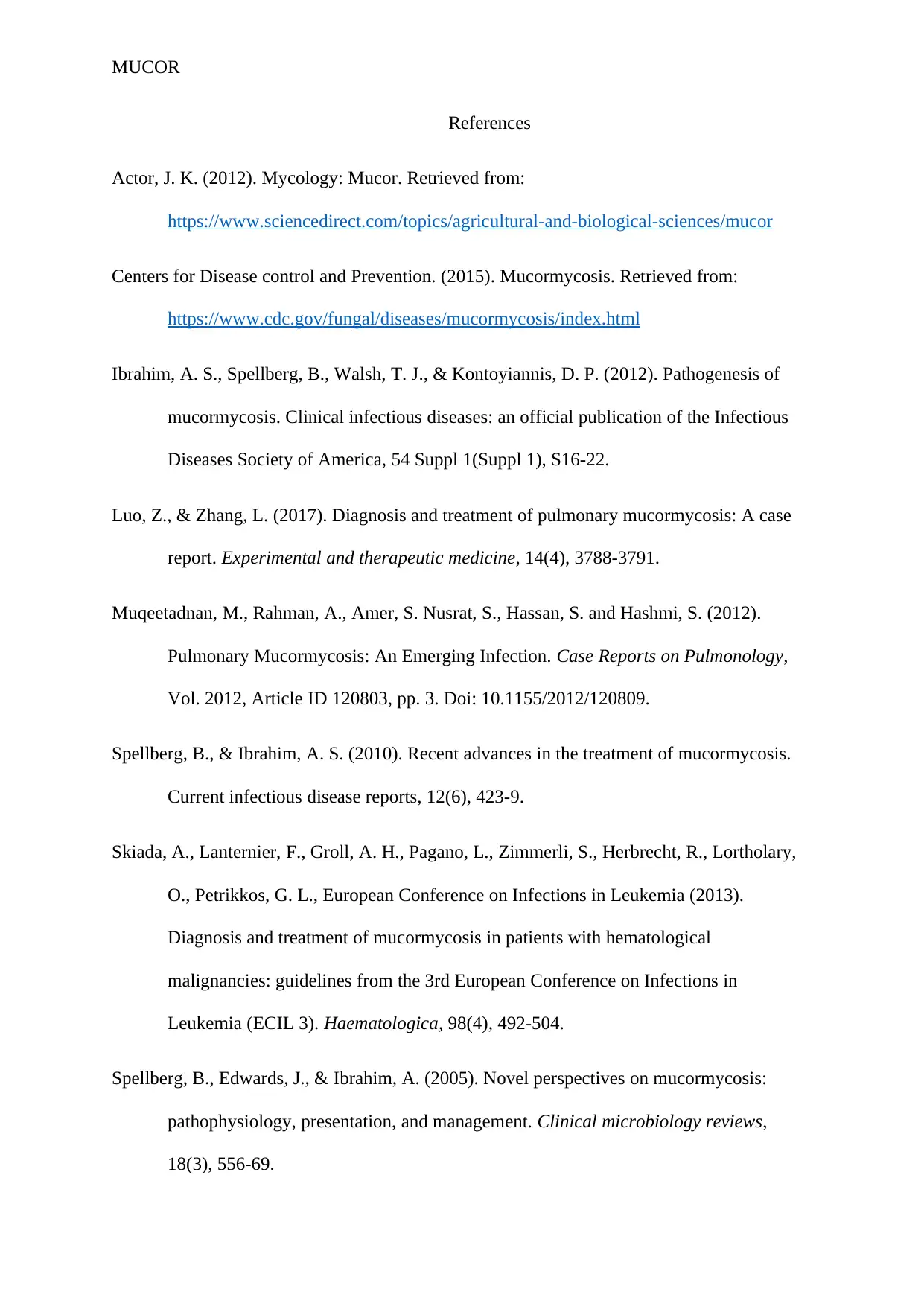Mucormycosis Infection: Analysis of Lab Results and Treatment Options
VerifiedAdded on 2023/06/03
|5
|1163
|403
Discussion Board Post
AI Summary
This assignment provides a detailed overview of mucormycosis (mucor), a rare fungal infection caused by mucormycetes, primarily affecting individuals with weakened immune systems. The document highlights the fungi's ability to thrive by obtaining iron from the host, making diabetic patients with ketoacidosis particularly susceptible. The analysis includes an interpretation of laboratory blood test results, noting deviations from normal ranges in pH, oxygen and carbon dioxide levels, and white blood cell counts, which are indicative of the infection's impact on the host's immune system. Therapeutic interventions discussed range from first-line antifungal therapies like AmB deosycholate and Posaconazole to second-line therapies and salvage options, emphasizing the importance of surgical removal of affected parts and combination antifungal approaches. The assignment concludes by referencing studies that support the efficacy of treatments like liposomal amphotericin B and combination polyene caspofungin therapy in improving patient survival rates.
1 out of 5







![[object Object]](/_next/static/media/star-bottom.7253800d.svg)